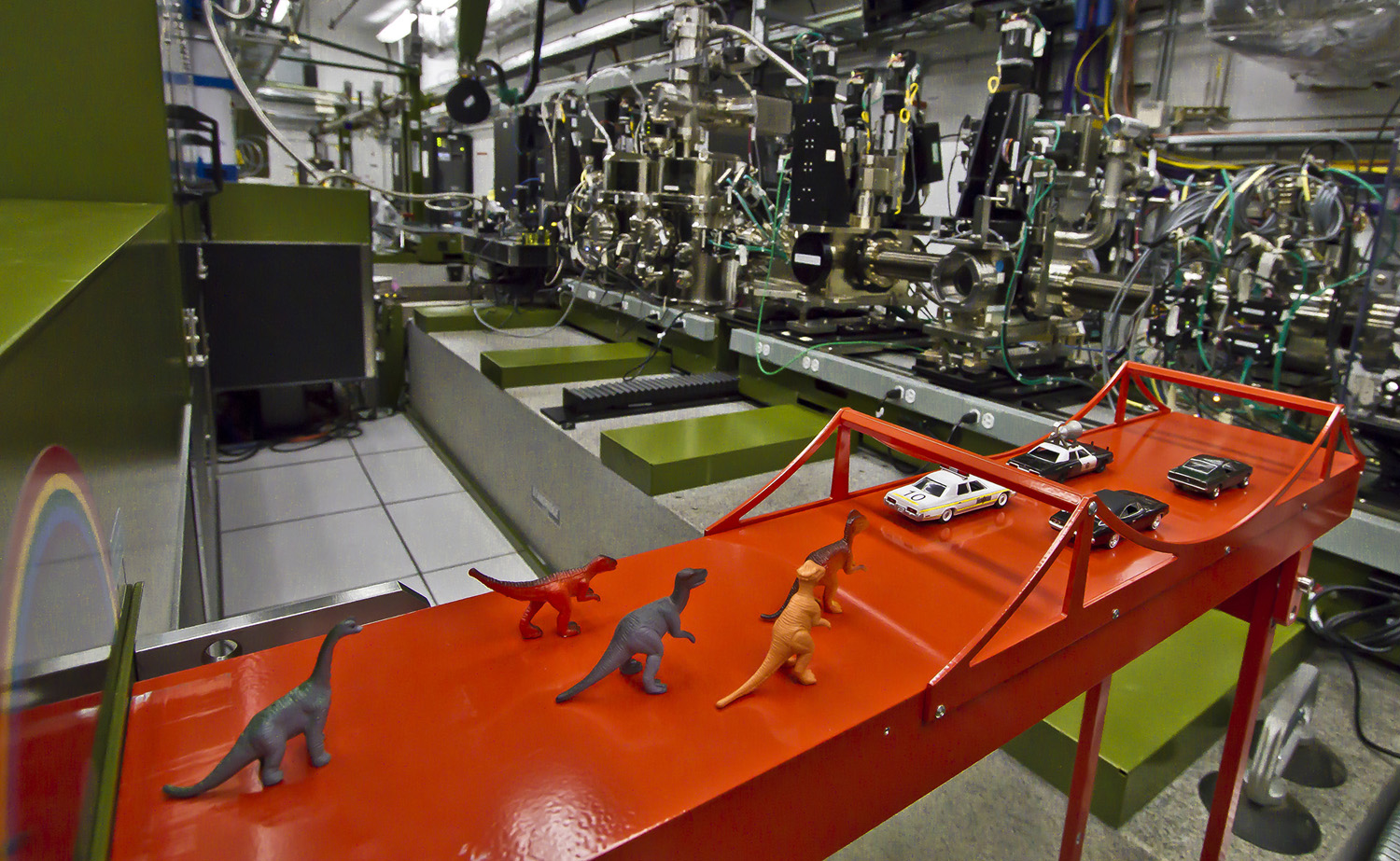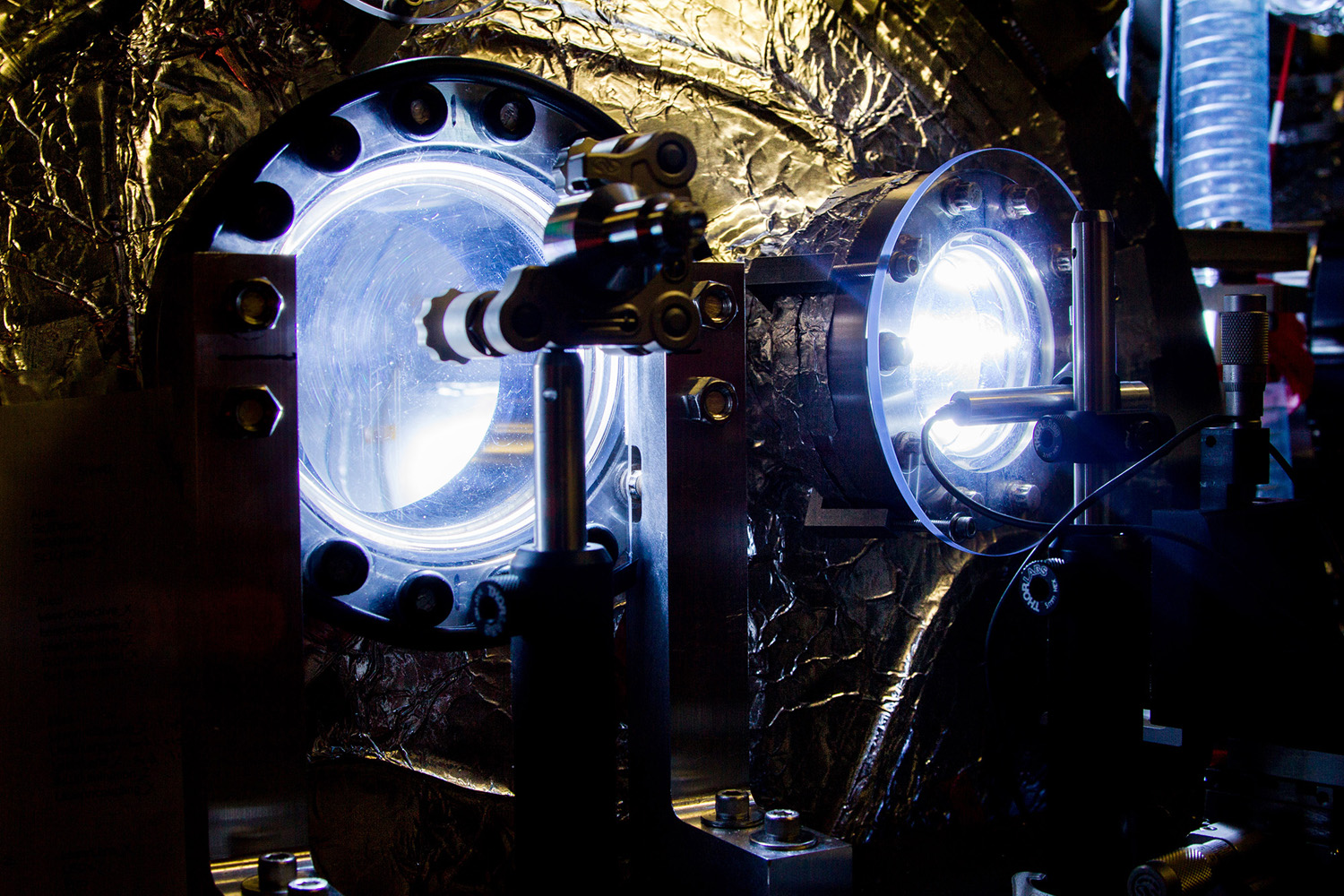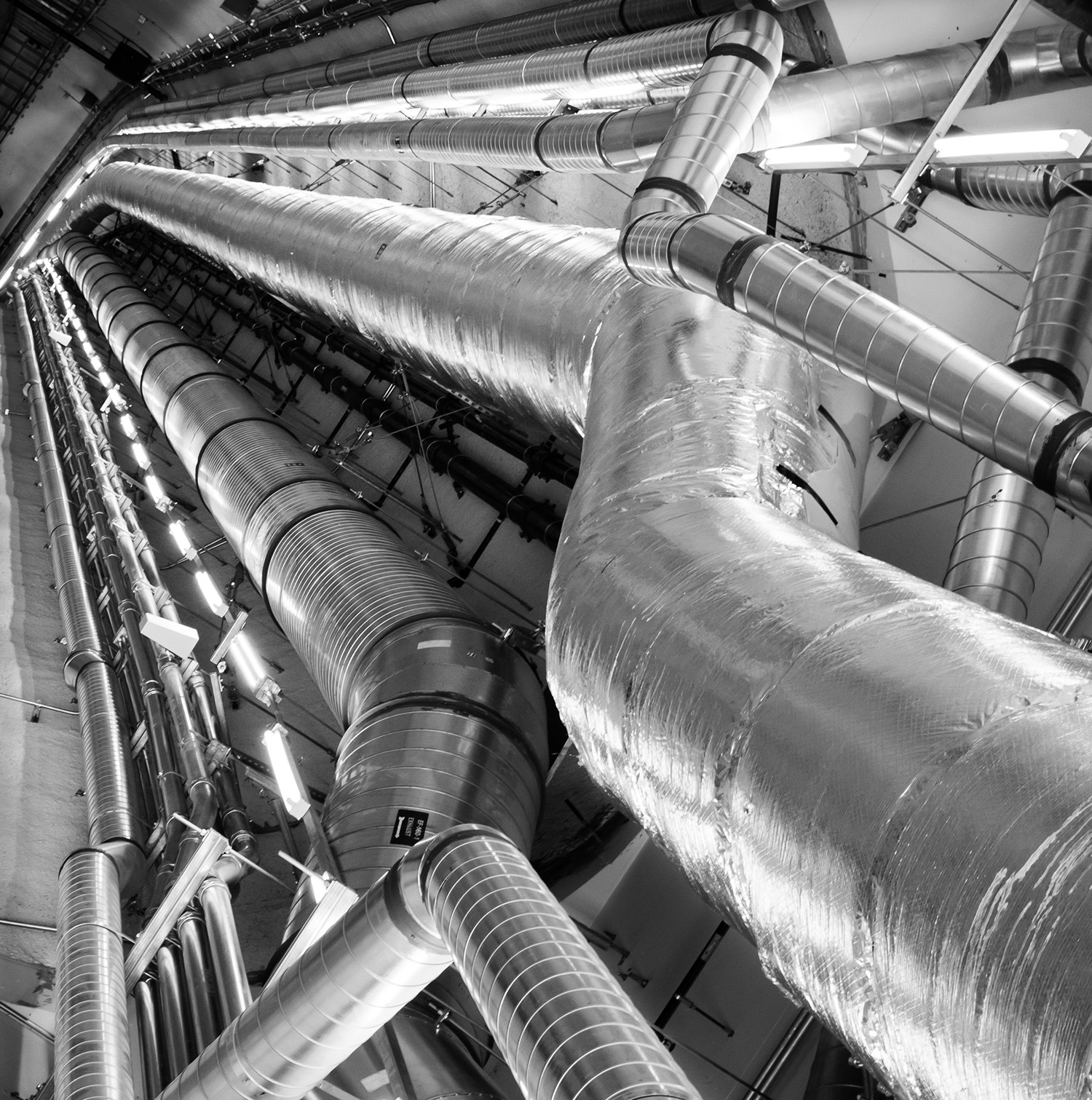Dinos & X-Ray Probes? Photos Show Playful Side of Particle Physics

A herd of tiny dinosaurs marching behind a fleet of toy cars sounds like something you'd see in a preschool classroom, not a state-of-the-art physics laboratory. But children's toys are what caught the eye of one photographer during a recent tour of the SLAC National Accelerator Laboratory in California.
The photographer, Daniele Fanelli, is one of the finalists in this year's Physics Photowalk, an annual contest hosted by Stanford University, home to the U.S. Department of Energy's high-tech accelerator lab. On Sept. 25, Fanelli joined other photographers on a tour of SLAC, snapping pictures of the laboratory's ultrabright lasers, its nearly 2-mile-long (3.2 kilometers) particle accelerator and its plethora of unusually placed toys and doodads.
The dinosaur photo is perhaps the most light-hearted image that earned a winning spot or honorable mention in the Physics Photowalk contest. One of the other winning pictures, titled "It's Hot in Here" by Nathan Taylor, shows an experiment chamber from the coherent X-ray imaging (CXI) station, a tool that uses a focused X-ray beam to create images of single submicron particles (particles that measure less than one-millionth of a meter across). [In Images: 2015 Physics Photowalk Winners]

The other winning photograph, shot by Cindy Stokes, is titled "Convergence." It shows the complex maze of heating, air conditioning and ventilation ducts that run along the ceiling of an entrance to the Linac Coherent Light Source (LCLS), which is where the CXI station and many other X-ray instrument stations are located at SLAC.
But amid the lab's scientific instruments, there are stark reminders of the men and women who operate these tools every day, according to Fanelli, a senior research scientist at Stanford. The dinosaur-laden workbench that won Fanelli a winning spot in the photo contest is just one example of the tokens of humanity that adorn the accelerator lab.
"The desks and whiteboards at SLAC bore traces of many such inside jokes, and in my photo walk I tried to document them," Fanelli told Live Science in an email. "The contrast between these silly toys and the extremely complex machinery surrounding them epitomizes what science is all about. It's about cultivating and giving free expression to our natural playfulness and curiosity. It's about rediscovering the child who is still looking through our eyes but was told to pretend to be an adult."

While Fanelli's was the only winning image in the Physics Photowalk contest that featured toys, many other contestants captured the innate curiosity and wonder that the high-tech lab inspires in other ways. A photo by Sumitha Pauli, entitled "Geek says Cheese," highlights a different view of the CXI station, one in which the station (decorated with a piece of red tape) seems to be smiling at the viewer.
Get the world’s most fascinating discoveries delivered straight to your inbox.
A photo titled "Racetrack" was shot in the Klystron Gallery, which sits atop the linear accelerator. At 1.9 miles (3 km) long, the gallery is the longest building in the United States, but the photographer, Nathan Taylor, didn't focus on that fact. Instead, he focused on a small section of a klystron, an electron tube that happens to look (and behave) a lot like a racetrack.
Fanelli also gave his photo a fitting name, "Going Straight to the Origins." What's behind this mysterious title? By keeping in touch with his or her inner child, a scientist is constantly going straight to the origins, said Fanelli, who noted that the title also has a second meaning that alludes to the origins of life itself (a mystery that SLAC physicists are working to explain).
And the explanation of those origins may be closer than we think, "hidden behind the mysterious rainbow-radiating black hole, out of which came dinosaurs, cars and X-ray pump probes," Fanelli said.
The three winning photographs taken at SLAC were submitted to the Global Physics Photowalk contest, where they will compete with the winning photos from seven other physics lab photo contests around the world. To see the photos that were submitted from the European Organization for Nuclear Research (CERN) in Switzerland, the Deutsches Elektronen-Synchrotron (DESY) in Germany and other state-of-the-art labs, visit the InterActions Physics Photowalk home page, where you can also vote for your three favorite images. The winners will be announced in December.
Follow Elizabeth Palermo @techEpalermo. Follow Live Science @livescience, Facebook & Google+. Original article on Live Science.

Elizabeth is a former Live Science associate editor and current director of audience development at the Chamber of Commerce. She graduated with a bachelor of arts degree from George Washington University. Elizabeth has traveled throughout the Americas, studying political systems and indigenous cultures and teaching English to students of all ages.
